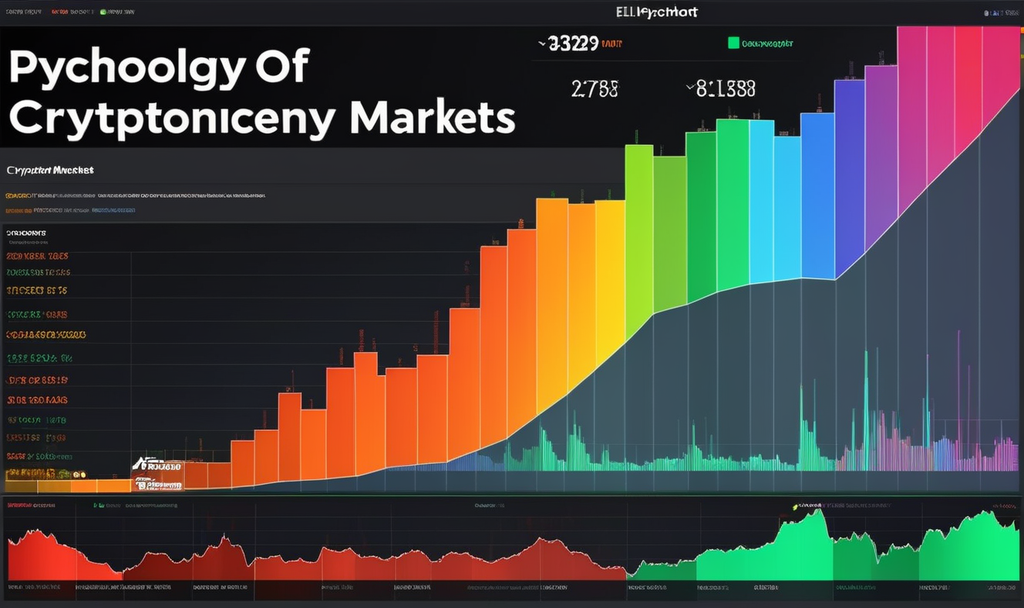The Psychology of Cryptocurrency Markets | Navigating the Turbulence of Investor Sentiment
The Psychology of Cryptocurrency Markets is a fascinating exploration into the intricate world of investor sentiment, shedding light on the emotional forces that shape the volatile landscape of digital assets. In this blog, we delve deep into the psychological underpinnings of cryptocurrency markets, dissecting the impact of investor sentiment on price movements, market trends, and decision-making processes.
Understanding the Crypto Rollercoaster:
Cryptocurrency markets are notorious for their volatility, characterized by rapid price fluctuations and unpredictable market conditions. The emotional rollercoaster experienced by investors in this environment plays a pivotal role in shaping market trends. Investor sentiment, driven by emotions such as fear, greed, and optimism, can significantly influence buying and selling decisions.
The Emotional Spectrum:
- Elation and Greed:
- As prices surge, investors may experience elation and greed, leading to a fear of missing out (FOMO). This emotional high often results in increased buying activity and a bullish market.
- Fear and Panic:
- Conversely, as prices decline, fear and panic can set in. Investors may rush to sell their assets to avoid further losses, contributing to a bearish market sentiment.
- Hope and Optimism:
- Hope and optimism emerge when positive news or developments in the crypto space create expectations of future gains. This sentiment can drive buying activity and contribute to market upswings.
The Impact of Social Media and News:
In the digital age, the influence of social media and news platforms on investor sentiment cannot be overstated. Information, whether accurate or speculative, spreads rapidly and can amplify emotional reactions within the crypto community. Social media discussions, news articles, and influencers play a significant role in shaping perceptions and influencing market behaviors.
The Psychological Phenomena at Play:
- Herd Mentality:
- Herd mentality, or the tendency to follow the actions of the majority, is prevalent in cryptocurrency markets. When a significant number of investors start buying or selling, others often follow suit, contributing to market trends.
- Loss Aversion:
- Loss aversion, the psychological tendency to prefer avoiding losses rather than acquiring equivalent gains, can lead to risk-averse behavior. Investors may sell assets quickly to prevent further losses during market downturns.
- Confirmation Bias:
- Confirmation bias, the inclination to interpret information in a way that confirms preexisting beliefs, can affect decision-making. Investors may selectively focus on news that aligns with their expectations, reinforcing their sentiments.
- Overconfidence:
- Overconfidence, stemming from past successes or positive market conditions, can lead investors to take excessive risks. This behavior may result in large losses during periods of market correction.
Navigating Sentiment-Driven Markets:
- Market Analysis:
- Investors should conduct thorough market analysis, considering both technical and fundamental factors. A balanced approach can help mitigate the influence of short-term emotional swings.
- Risk Management:
- Implementing effective risk management strategies is crucial. Setting stop-loss orders and diversifying portfolios can help protect against sudden market downturns.
- Long-Term Perspective:
- Adopting a long-term perspective can help investors weather short-term market fluctuations. Focusing on the fundamentals of blockchain projects and their potential for long-term success can provide stability.
- Community Engagement:
- Engaging with the crypto community can offer valuable insights. However, it’s essential to critically evaluate information and avoid succumbing to herd mentality.
The Role of Institutional Investors:
The entry of institutional investors into the cryptocurrency space has introduced a new dynamic to market sentiment. As large institutions adopt a more measured and strategic approach, their influence can counterbalance the rapid emotional shifts often seen among retail investors.
Regulatory Developments and Sentiment:
Regulatory developments also play a crucial role in shaping investor sentiment. Positive regulatory news can instill confidence and optimism, leading to increased investment. Conversely, regulatory uncertainties or negative developments can trigger fear and prompt investors to withdraw from the market.
Market Sentiment Analysis Tools:
In the digital age, advanced technologies and machine learning algorithms have given rise to market sentiment analysis tools. These tools analyze vast amounts of data from social media, news sources, and trading platforms to gauge overall market sentiment. Investors can leverage these insights to make more informed decisions.
The Dark Side: Manipulation and Pump-and-Dump Schemes:
While investor sentiment is a natural and often unpredictable force, the crypto space has witnessed instances of manipulation. Pump-and-dump schemes, where coordinated efforts artificially inflate the price of a cryptocurrency before selling off, can exploit the vulnerabilities of sentiment-driven markets. Investors must remain vigilant and exercise due diligence to avoid falling victim to such schemes.
If you have any question about this article, please contact us …
You can also learn about this through shrimpy Academy.
Conclusion:
The Psychology of Cryptocurrency Markets is a complex interplay of emotions, information, and external factors. Understanding the dynamics of investor sentiment is essential for anyone navigating the crypto landscape. As the market continues to mature, the ability to remain level-headed amid the highs and lows becomes a valuable skill. By adopting a strategic and informed approach, investors can better navigate the psychological currents that characterize the captivating world of cryptocurrency.

